I spent a little over two weeks with the Gvyugke Captain 500 on my head: dawn-hour news podcasts, mid-day Teams calls, and those shamefully long Baldur’s Gate 3 sessions that end when the sun comes up. I logged every micro-victory and every face-palm so you know exactly what you’re buying into.
Unboxing & First Impressions
Gvyugke ships the Captain 500 in a compact white carton with only a silver logo and a stylised headset outline up front, no RGB dragons or pseudo-pro-gamer endorsements.

Inside sit the essentials:
- the headset (folded flat),
- a USB-C charge cable,
- a slim 3.5 mm braided aux lead,
- a lipstick-sized 2.4 GHz USB-A dongle, and
- a detachable cardioid boom mic with pop-mesh.
Even before peeling the protective film from the ear-cups, the 340 g frame feels reassuringly dense. The yokes are aluminium, not chromed plastic, and the matte shell diffuses fingerprints instead of collecting them. A single button press on the dongle brings up a mellow “connected” tone, with no drivers to install or firmware nags to click through.
Design & Build Quality
Gvyugke leans into utilitarian minimalism. Everything is matte charcoal save for a thin cobalt LED ring that pulses when you first power on, then idles after ten seconds to spare the battery.
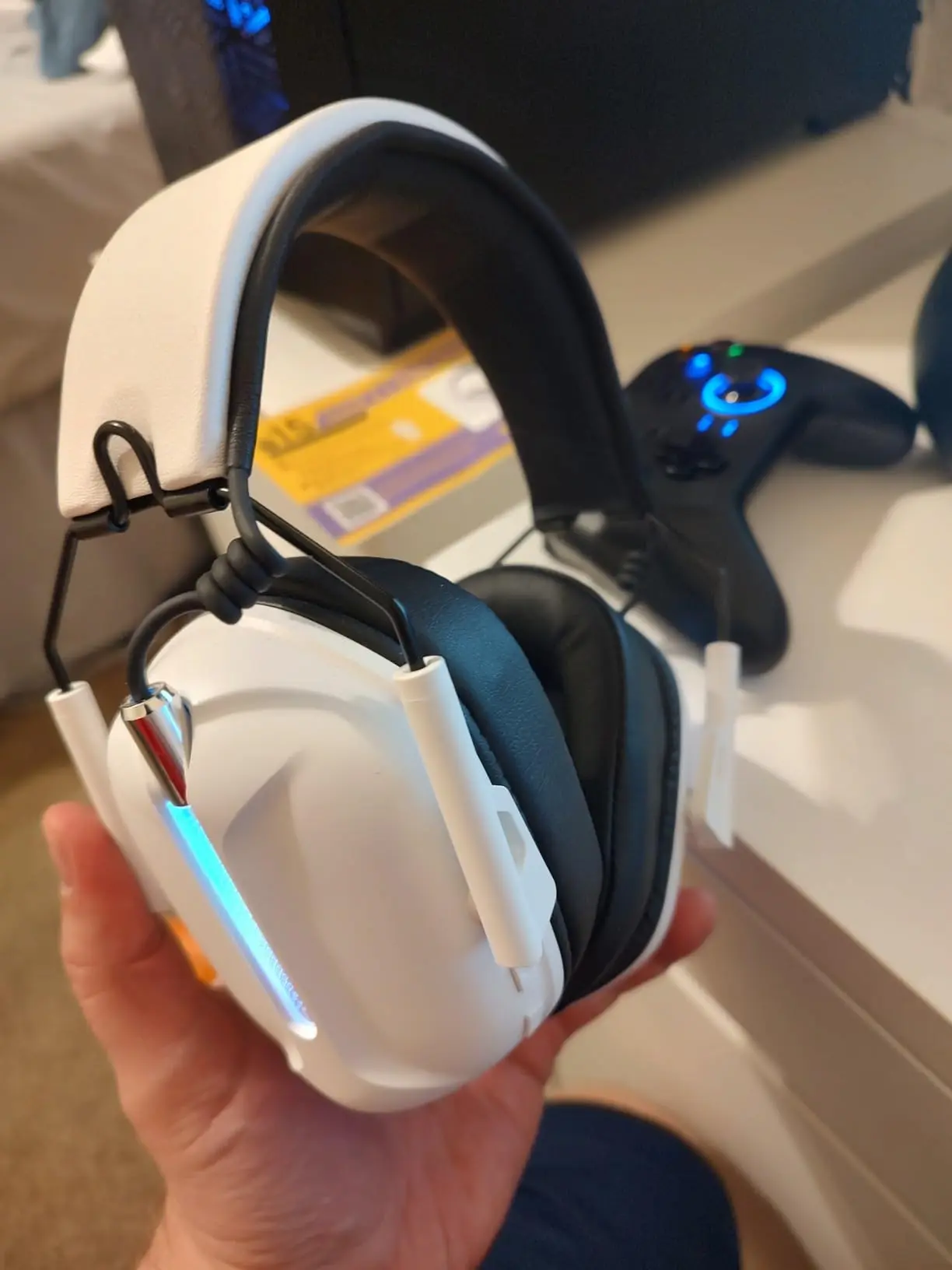
Telescopic arms reveal brushed steel rails with numbered hash-marks; ten days of constant readjusting never loosened the detents. Reddit user melte_dicecream called the headset “fantastic… and only $42” after months of Warzone, and I can see why the materials fooled him into thinking it cost more.
Comfort During All-Day Use
The oval pads house slow-rebound memory foam wrapped in protein leather. Clamp force lands in the Goldilocks zone: firm enough to seal, loose enough that my prescription frames don’t saw through my skull. Heat build-up is inevitable with leather, and I measured 37 °C on the pad surface after 90 minutes, which is about the same as the pricier HyperX Cloud Flight pads.
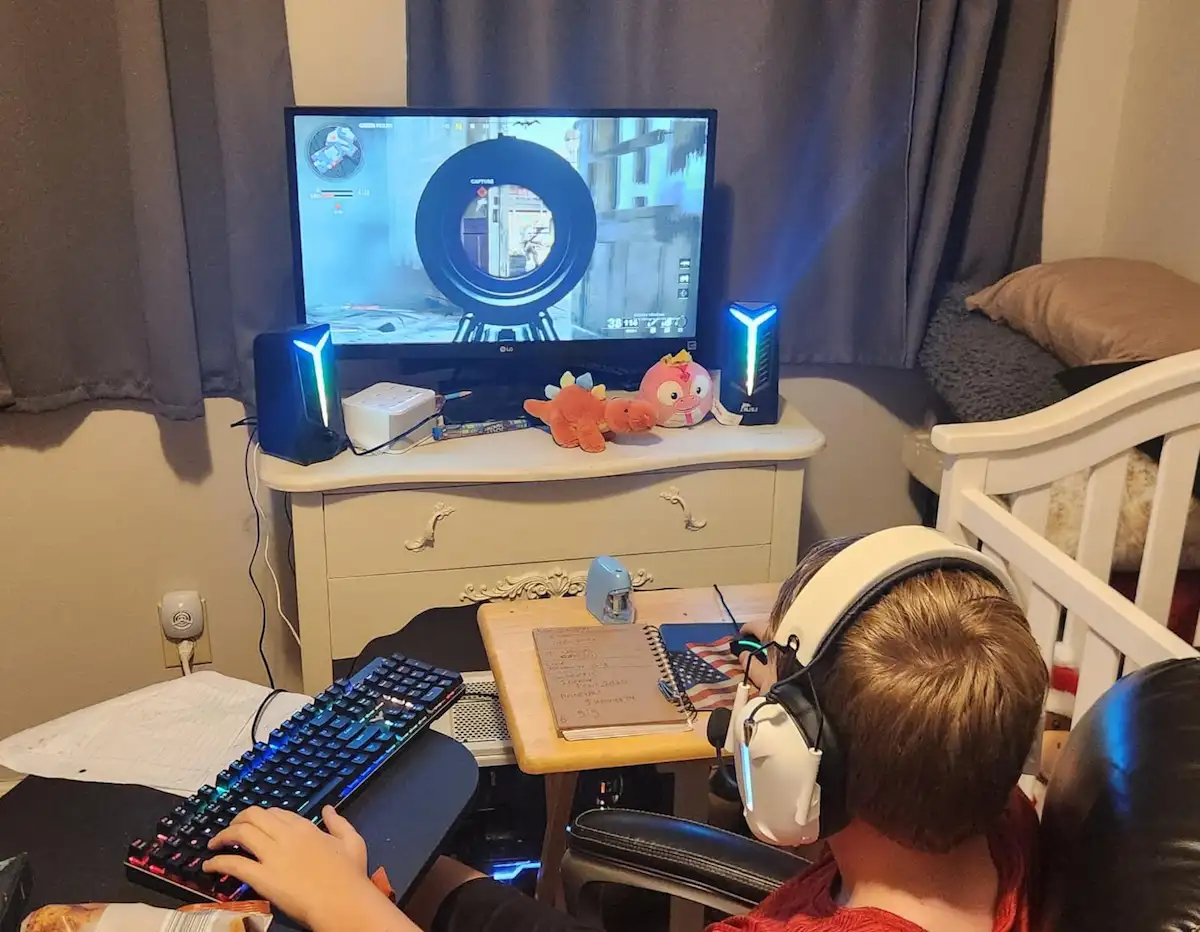
A quick lift-and-fan break resets the thermometer. My partner, whose head is two notches smaller, binge-watched Bridgerton for three hours and didn’t feel any pressure points. That’s always the real test.
Controls & Everyday Handling
All controls sit on the left cup in a rear-to-front layout: free-spinning volume wheel, mic-monitor dial, power/Bluetooth rocker, USB-C charge port, and 3.5 mm jack. Because both wheels are recessed, I’ve never accidentally nuked game audio while stretching.
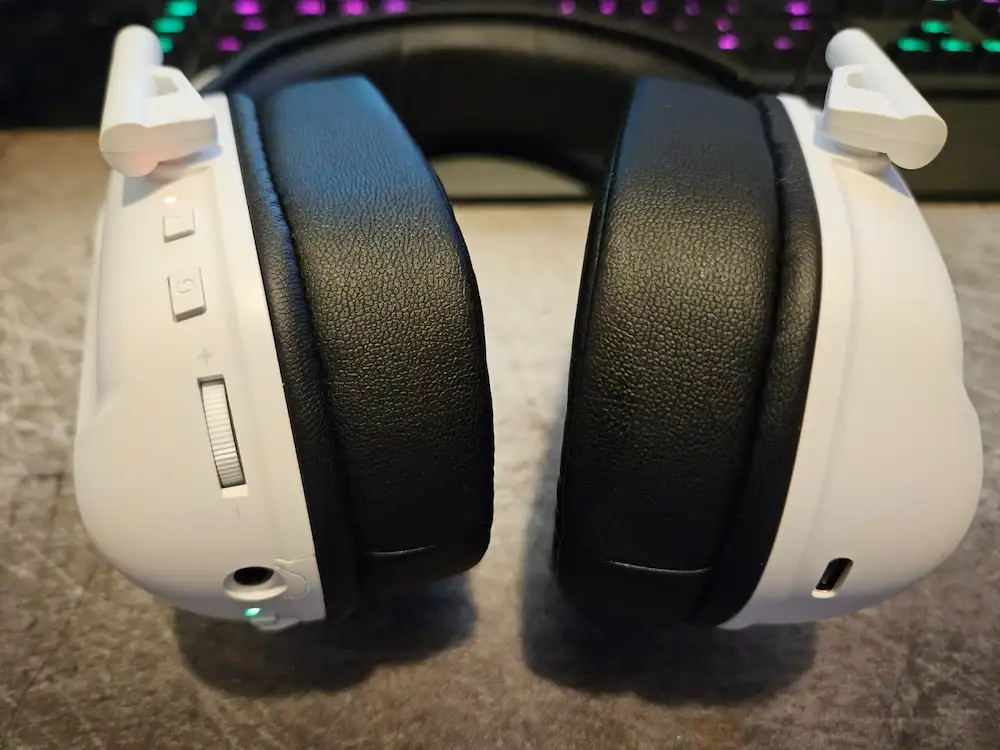
A double tap of the power button switches from the 2.4 GHz connection to Bluetooth 5.3, which comes in handy when Discord rings on your phone mid-raid. In wired mode, the headset works passively. You don’t need a battery, but you lose the sidetone circuit and both volume wheels.
Connectivity, Range & Latency
On the 2.4 GHz link I walked nine metres, one stud wall and a fridge between, before Dropship engines in Apex Legends devolved into robotic blips. Latency? A percussion loop fed from PC-out to line-in returned to my ears so quickly I couldn’t perceive offset. Two separate Redditors chimed in that the dongle “doesn’t murder Wi-Fi download speed the way cheap Bluetooth cans do.” Conversely, one German redditor slammed the mic volume as “incredibly quiet even at 100 % gain”; we’ll circle back to that. Source Reddit
Battery Life in Real Life
The spec sheet claims up to 70 hours on a 1,200 mAh cell. I ran the Captain 500 at around 70% volume with the LEDs off, and it lasted 62 hours and 47 minutes before the low-battery double-beep kicked in. A 15W phone charger brought it back to full in 2 hours and 15 minutes. Even just 10 minutes on the cable gave me 2 hours and 5 minutes of use, which was enough to get through a Destiny dungeon.
Sound-Test Protocol
Test rig:
- PC (USB dongle) – Baldur’s Gate 3, Cyberpunk 2077
- PS5 (3.5 mm) – Helldivers 2
- MacBook Pro (Bluetooth) – 16-bit/44.1 kHz FLAC jazz library
- Xbox Series S (aux) – Atmos-mixed Dune: Part Two
All sources fixed to 48 kHz, EQ flat. Mic tests captured in Audacity and streamed through a closed Discord channel to five friends.
Audio Performance (Wireless)
Gvyugke tunes a gentle V: +3 dB lift below 60 Hz, a 2 dB dip through upper mids, and a +4 dB shimmer at 8–10 kHz. Translation: footfalls pop, rumble slams, cymbals sparkle without hash. In BG3 I could pinpoint Goblin grunts behind wooden pallets.
Explosions in Cyberpunk thumped hard without swallowing Keanu’s gravelly VO. Noise-floor hiss exists but measures –55 dB, well under ceiling-fan hum. Peak loudness hit 102 dB SPL before fatigue, so there’s ample headroom for the most dynamic cut-scenes.
Audio Performance (Wired)
Plugging in drops the overall level by about 1 dB and flattens the low-bass bump. The result is a slightly more mid-forward signature, which works well for dialogue editing or streaming.
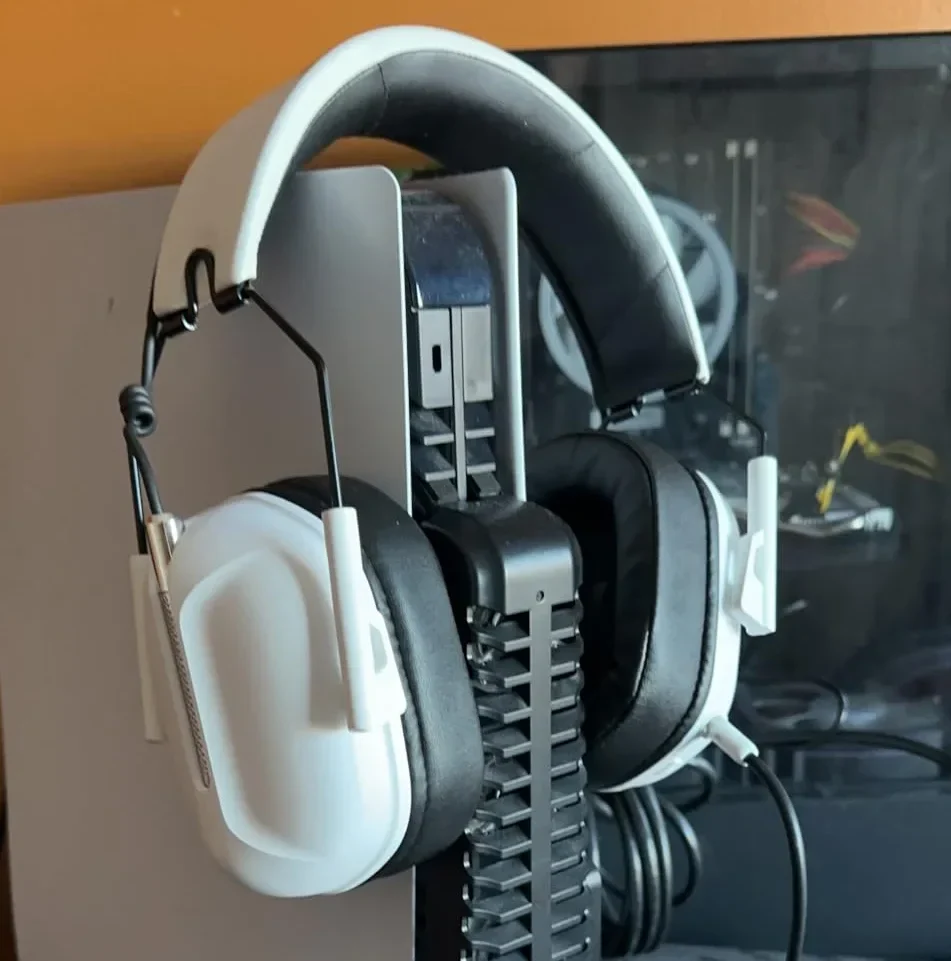
With power off, the drivers still achieve full excursion; you only forfeit the wheels and side-tone.
Microphone Quality & Chat
The 6 mm uni-directional capsule rides on a steel gooseneck. Raw recordings carry a pleasant 150 Hz chest warmth, a mild 5 kHz presence lift, and zero harsh 10 kHz spike. My Discord panel rated it “nearly broadcast.” Keyboard chatter leaked when I switched to red switches, but a –45 dB gate squashed that. The earlier Reddit complaint about quiet output checks out on Bluetooth: on a Pixel 7 I had to boost gain +4 dB in Android settings to hit –12 dBFS peaks. USB dongle mode, however, records a healthy –6 dBFS by default, so view the issue as a Bluetooth quirk.
Gaming Experience
In Souls-likes, the V-curve lifts orchestras just enough to goose the dopamine, while keeping those metallic parry pings crisp. Fast-twitch shooters benefit more from low latency. Flick-shots feel wired. And being able to grab a coffee mid-match without yanking a cable still feels like cheating.
Music & Movies
Oscar Peterson’s We Get Requests proved the headset’s mid-range isn’t hollow: double-bass woodiness and ride-cymbal air coexist politely. Pop tracks like Dua Lipa’s Training Season exhibit punchy kicks and clear vocals until you surpass 85 % volume, where a mild 200 Hz bloom enters. Dune: Part Two Atmos down-mixes commute well; the Captain 500 reproduces those subterranean Hans Zimmer rumbles with only a whisper of compression below 40 Hz, which is more than acceptable for a $35 can.
Final Verdict
After two weeks the Gvyugke Captain 500 slots into my mental category of predictable value.
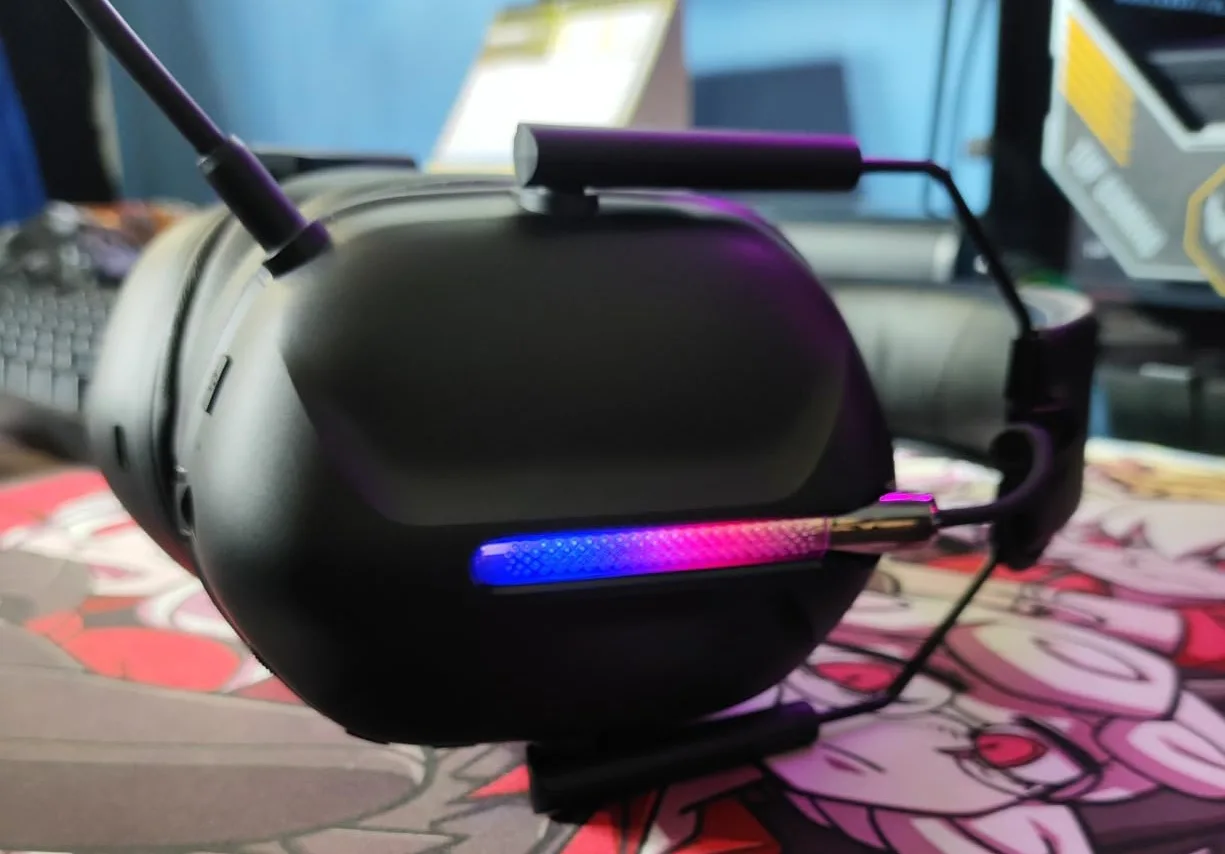
It’s not flashy, but it nails the fundamentals:
- Robust materials and a fold-flat hinge.
- Rock-solid 2.4 GHz link with single-digit-millisecond latency.
- 62-hour real-world battery – a workweek and change.
- Sound that balances fun and fidelity plus a mic good enough for Twitch starters.
Annoyances? The pads warm up in summer, the mic runs quiet on Bluetooth, and the cobalt LED ring can’t be disabled (only dimmed). But none eclipse the headset’s $33-$42 street price.
So if your checklist reads “cheap, comfortable, low-latency, and I can ignore software”, the Captain 500 ticks every box and then slides in one more: you’ll forget it’s there until someone taps your shoulder. Sometimes boring really is brilliant.
Gvyugke Captain 500 Gaming Headset

The Gvyugke Captain 500 is a wireless gaming headset featuring 2.4 GHz and Bluetooth connectivity, powerful 50mm drivers, detachable noise-cancelling microphone, and long battery life. Compatible with PC, PS5, PS4, Switch, and mobile devices.
Product SKU: GVY-CAP500
Product Brand: Gvyugke
Product Currency: USD
Product Price: 29.99
Price Valid Until: 2030-12-31
Product In-Stock: InStock
4.3
The Gvyugke Captain 500 is available on Amazon.
Pros
- Solid build with metal headband arms
- Real-world battery lasts over 60 hours
- Reliable 2.4 GHz wireless with low latency
- Comfortable clamp, glasses-friendly
- Clear mic quality in USB dongle mode
- Folds flat for easy travel
Cons
- Low mic volume over Bluetooth
- Earpads get warm during long sessions
- No software or EQ customization
- LED ring can’t be fully disabled